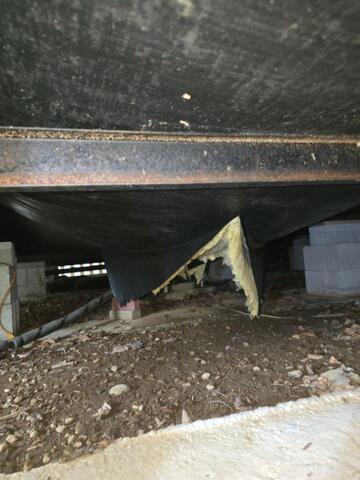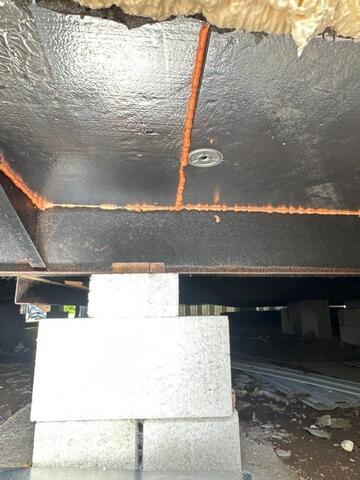Before & After Photos
Click on a photo to enlarge.
Preparing a Dormer for Winter in Ashford, CT
This homeowner in Ashford, CT was creating a studio above his garage that he could use all year round.
We attached our Insulweb polypropylene netting to joists on the ceiling and walls, this creates a cavity for our TruSoft cellulose to be installed in. Once in place, we cut small slits in the Insulweb that we can then insert a hose into to densely pack in our Trusoft cellulose. For these dormers, we also installed our Foamax Polyiso board in the triangular wall space above the window and sealed around them to keep drafts out.
Thanks to Dr. Energy Saver by Eco Energy Solutions, this studio can stay warm in the winter and cool in the summer and is ready to be finished off with drywall if the homeowner decides to later on.
Insulating Under a Home in North Windham, CT
This homeowner in North Windham, CT called us hoping that we would be able to help her with her home. She was living in a mobile home, and several leaks occurred. Her remediation company informed her that the insulation underneath the mobile home got wet and damaged. Additionally, several places were cut in the remediation process. She wanted this insulation removed and replaced as soon as possible. This was complicated by the fact that this was her summer home, and she was looking to leave a few weeks later.
We had the perfect solution for this customer. In this solution, SilverGlo™ foam insulation board is installed across the bottom of the floor joists with special long screws and 3” washers, SilverGlo™ is expanded polystyrene foam with graphite infused into the foam, which bumps up the insulation (“R”) value by 24% over standard EPS foam. Further, SilverGlo™ has a radiant barrier to reflect heat, so the insulation isn’t doing all the work by itself. All seams are sealed. If necessary a skirt board can be installed around the perimeter of the insulation so the edge is not visible. The skirt board may require painting after we are complete. Result - Much warmer floors, less drafts and more comfortable rooms, quieter home, lower fuel and electric bills.
Replacing Attic Insulation in Barre, MA
This homeowner in Barre, MA called us hoping that we would be able to replace his old and inefficient insulation. When our Home Comfort Specialist arrived, he found that the attic was not air sealed and was insulated with inefficient fiberglass insulation. This meant that there were severe air leaks and temperature issues.
We first had to remove all of the fiberglass insulation. This was bagged and placed in our truck in order to be disposed of. We then vacuumed up the remaining loose insulation.
After that, we air sealed every gap in the attic. To do that, we utilize Zypfoam™ expanding foam. After doing other necessary services prior to insulation, we install baffles (air chutes) into the rafter bays as necessary. We finally use our TruSoft™ blown-in cellulose insulation, blown in to the optimal R-value. This insulation fills all gaps and voids, and prevents thermal bridging by filling over framing members. This homeowner now has a properly insulated home -- it is warmer, more comfortable, and even quieter!
Insulating Skylight in Sturbridge, MA
Our team insulated a skylight in a home so the homeowners can have a cooler and more comfortable home in the summer and warmer rooms in the winter.
Side of Attic Insulation in Sturbridge, MA
This home needed to be insulated so we got on the job and insulated parts of the Attic













